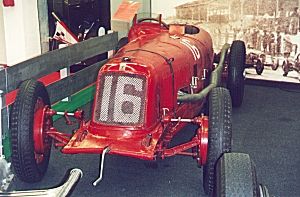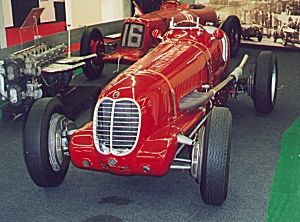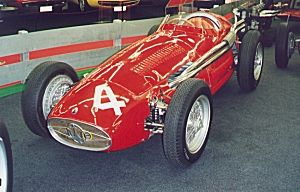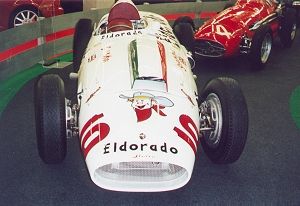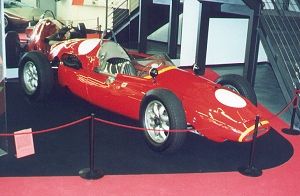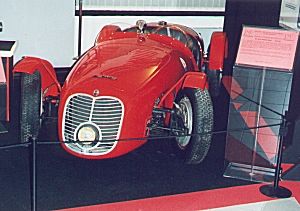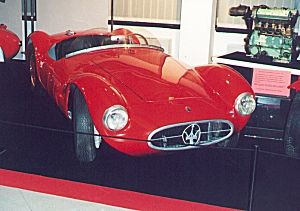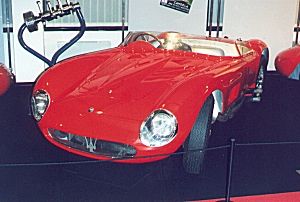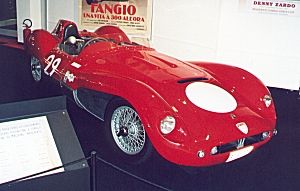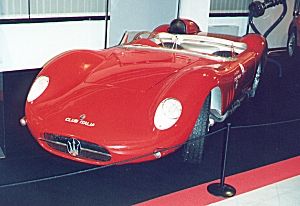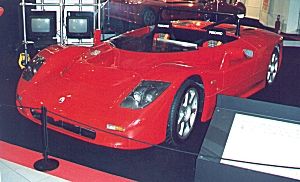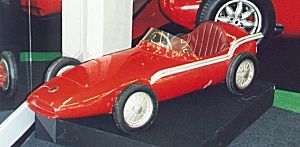 |
||
| A superb exhibition of Classic Maseratis ENDED 18th MARCH 2001 |
||
The Museo dell'Automobile "Luigi Bonfanti" at Romano D'Ezzelino near Vicenza hosted an important exhibition of classic Maseratis until the 18th March 2001 and if you have missed the opportunity of visiting the museum I hope you'll enjoy these pages.
I would like to thank Sig. Arcangelo Battaglia and Sign. Rosanna Bontorin from the museum for their kindness in allowing me to take these photographs and pass on this information to 'Maseratisti' who were unable to visit this exhibition. |
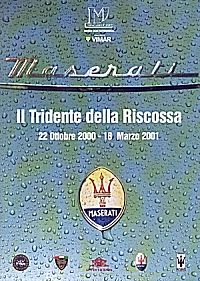 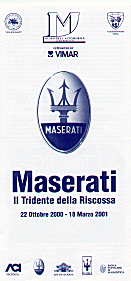 |
 |
|
The catalogue, with cover designed by Stefano Chiminelli, and programme of the exhibition, which unfortunately are published mainly in Italian with ONLY PART English translation. |
|
|
Always ready to delight and intrigue with speciality "niche" subjects. The Luigi Bonfanti Museum is once again about to enthrall us all with a new exibition. From the 28th of October until the 7th of April "L'Autominima, oggi pił di ieri" (The micro motor car, today more so than yesterday). An exhibition of about sixty micro-cars, which will tell mostly unknown stories, of attempts at innovative ideas and projects, some ending in success others in failure. A motor car can be minimal for many reasons, mostly dimensions, capacity and price. In the past micro-cars usually showed several ingenious solutions, mostly full of fantasy and innovation that did not appear in traditional motor cars. It has always been a dream, since the birth of the motor car, to successfully produce the minimal car and sometimes in the process substantial fortunes were lost. Designers wanted to produce a vehicle which everybody could afford, as economical as a motor bike, easy to drive, yet as comfortable as a motor car. This exhibition shows the complete story: from the 1899 Prinetti & Stucchi, through the Isetta, to the Smart and into the future. A unique exhibition, sponsored by the Veneto regional authority, during which there will be a most interesting conference on urban mobility. The participants including the Automobile Club d'Italia, the Padua University, the previously mentioned Veneto regional authority and other public organisations. Today, suffocated as we are by city traffic, we have to look again at the micro car. The major manufacturers are involved which should ensure some rationality and ultimate success. Running "true to form" the "Bonfanti" Museum is as thought provoking as usual in this, their latest exhibition. |
 |
||
|
To enter Enrico's Maserati Pages CLICK HERE! Copyright: Enrico's Maserati Pages - © 2000-2004. All rights reserved. |
